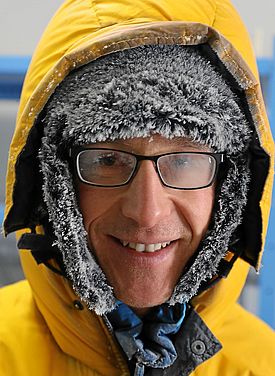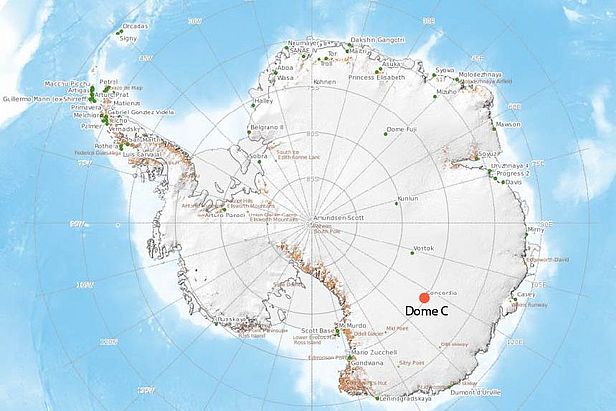
Blog Antarctica ¶
Antarctic expedition – Researching in the endless ice ¶
SLF researcher Matthias Jaggi is set to spend two months at the Antarctic research station Concordia (Dome C), where he is conducting experiments on snow metamorphism. He posts regular updates about his work and his experiences at the station in a blog on this site.
About Matthias Jaggi ¶

Matthias Jaggi is a technical staff member with the WSL Institute for Snow and Avalanche Research (SLF) Snow and Permafrost Research Unit. As the engineer responsible for SLF's cold laboratory, he is used to working at extremely low temperatures. However, this is his first ever trip to Antarctica. He is keen to see what awaits him there and is curious about life at the station.
He prepared for the expedition in SLF's laboratory – wrapped up against the cold, of course! The temperature in the lab was a relatively balmy -40°C; it can get significantly colder than that in Antarctica.
Background to the expedition ¶
There is little precipitation in central Antarctica, while the average air temperature is -54°C. These conditions mean that the snow never melts there. Instead, thin new layers of snow form on top of the existing layers each year. Under the pressure of further layers of snow, they slowly turn into ice. This is how the thick ice sheet covering Antarctica was formed over the course of thousands of years.
The Antarctic ice sheet is an important source of information about the Earth's climate: by analysing ice cores, researchers can draw conclusions about the atmospheric conditions as long as hundreds of thousands of years ago. For instance, they can measure the ratio of the stable oxygen isotopes 18O and 16O in the water molecules in the ice. The higher the ratio, the warmer the climate was when the ice formed.
However, when it comes to drawing conclusions about the temperature, there is still too little information about one factor: snow metamorphism. Before fallen snow turns into ice, a number of transformation processes take place. These can affect the exchange of water molecules with the atmosphere, which, in turn, alters the isotope ratio of 18O to 16O. Any change in the isotope ratio influences the measurement results obtained when the ice cores are analysed. This is one of the reasons why SLF researchers are studying the metamorphic processes in polar snowpacks in extreme temperature conditions.
The experiments ¶
Matthias Jaggi's experiments at Dome C are intended to mimic the natural development of a polar snowpack. To that end, he is cutting blocks of snow from an untouched area outdoors and packing them in airtight, specially developed metamorphosis boxes. Inside the boxes, the blocks of snow will be exposed to a temperature gradient like that found in the natural snow profile (between about -45°C at the bottom and -30°C at the top) for a period of two months. The boxes are being stored in the station's snow cave at a temperature of -50°C. At the same time, Matthias Jaggi is measuring the development of the natural snowpack in the field. The snow samples will then be transported back to Europe by ship and analysed there. SLF researchers will use computed tomography imaging to study the snow's structure in SLF's cold labs in Davos, while French researchers in Paris analyse the oxygen isotopes 18O and 16O.
The expedition is part of the project "Snow properties evolution in a changing climate in Antarctica", which is being conducted in cooperation with the Grenoble-based Institut des Géosciences de l'Environnement and the French national polar research institute.
The research station ¶
The Italian-French station Dome Concordia (or Dome C for short) is operated by the French national polar research institute Institut Polaire Français Paul-Emile Victor (IPEV). It is located around 3,200 metres above sea level at the coordinates 75°06’S 123°21’E. It lies in the interior of the Antarctic continent, almost 1,000 kilometres from the coast.
